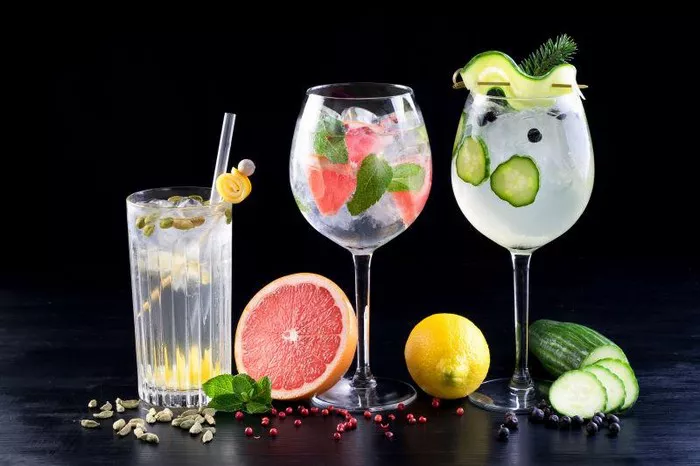In the realm of mixology, certain combinations transcend time, leaving an indelible mark on the palates of cocktail enthusiasts. One such revered concoction is the iconic blend of gin, Campari, and sweet vermouth. As we delve into the intricacies of this celebrated libation, it becomes apparent that this cocktail, known as the Negroni, is more than a mere blend of spirits; it embodies history, sophistication, and a harmonious fusion of flavors.
Origins and Evolution
To comprehend what cocktail consists of gin, Campari, and sweet vermouth, it’s imperative to journey back to its inception. The Negroni, believed to have emerged in early 20th-century Italy, is steeped in legend and aristocratic lineage. Count Camillo Negroni, seeking a bolder rendition of his beloved Americano, instructed the bartender to swap soda water with gin—a move that birthed this iconic blend. This transformation marked the genesis of the Negroni, a testament to the intriguing synergy between the three core ingredients.
Ingredients Unveiled
At its core, the Negroni comprises equal parts of gin, Campari, and sweet vermouth, creating a symphony of contrasting yet complementary flavors. Gin, the backbone of this concoction, infuses a botanical depth, lending juniper notes and a nuanced herbal essence. Campari, renowned for its vibrant crimson hue and bitter profile, imparts a tantalizing bitterness underscored by subtle hints of orange peel and spices. Sweet vermouth, a fortified wine infused with herbs and spices, brings forth a luscious sweetness that harmonizes the cocktail, elevating its complexity.
The Art of Mixology
Crafting a Negroni isn’t merely about combining these three ingredients; it’s an art form that demands precision and finesse. The equal parts ratio, often referred to as the “Golden Ratio,” forms the backbone of this cocktail’s balance. The mixing technique, whether stirred or shaken, plays a pivotal role in achieving the desired amalgamation of flavors. Stirring, preferred by purists, maintains the drink’s clarity and silky texture, while shaking introduces aeration and a slightly different mouthfeel.
Variations and Innovations
While tradition reigns supreme, the world of mixology is replete with creative interpretations and innovative twists on the classic Negroni. Bartenders and enthusiasts alike experiment with barrel aging, smoked infusions, and the incorporation of diverse botanicals to concoct variations that pay homage to the original while introducing novel dimensions. Variants like the White Negroni, utilizing different spirits or modifiers, showcase the cocktail’s adaptability and the endless possibilities it offers.
Aesthetic and Sensory Delight
Beyond its exquisite taste, the Negroni captivates with its visual allure—a striking crimson hue that evokes sophistication and allure. The cocktail’s aroma, a tantalizing blend of herbal, citrus, and floral notes, entices the senses before the first sip. Upon tasting, the Negroni unfolds a complex tapestry of flavors—initial bitterness yielding to a harmonious interplay of botanicals, culminating in a lingering, bittersweet finish that beckons another sip.
Cultural and Social Significance
Beyond its stature as a beloved cocktail, the Negroni has entrenched itself within popular culture and charitable causes. The Negroni Week, an annual celebration that originated as a platform to honor this cocktail, has evolved into a global fundraising initiative. Bars and establishments worldwide participate, donating a portion of Negroni sales to charitable organizations—a testament to the Negroni’s influence transcending the boundaries of mixology.
Pairings and Culinary Affinities
The Negroni’s versatile flavor profile makes it an ideal companion for an array of culinary delights. Its bitter-sweet equilibrium complements rich and savory dishes, cutting through fatty textures and enhancing the dining experience. Pairings range from charcuterie and cheese platters to seafood delicacies and even desserts, with each bite and sip elevating the other’s nuances.
The Enduring Legacy
As we unravel what cocktail consists of gin, Campari, and sweet vermouth, it becomes apparent that the Negroni’s enduring legacy extends far beyond its ingredients. It encapsulates a rich heritage, an embodiment of elegance and innovation that continues to captivate cocktail enthusiasts globally. Its timeless allure lies not just in its taste but in the stories, traditions, and cultural significance woven into every sip.
In Conclusion
The Negroni stands as a testament to the alchemical brilliance achievable within a simple trio of ingredients—gin, Campari, and sweet vermouth. Its journey from an Italian aristocrat’s request to a global sensation underscores its unparalleled allure and versatility. As mixologists continue to innovate and reimagine this classic, the Negroni remains an eternal icon—a timeless concoction that transcends trends, inviting enthusiasts to savor its bitter-sweet symphony for generations to come.


